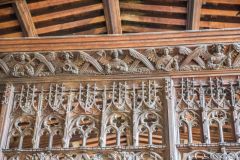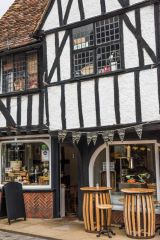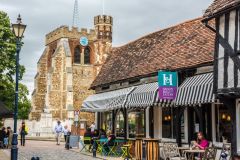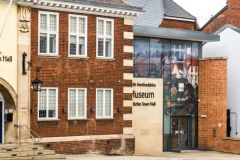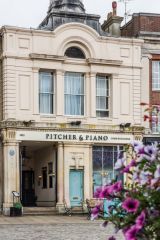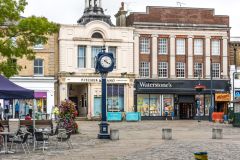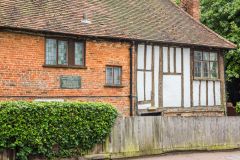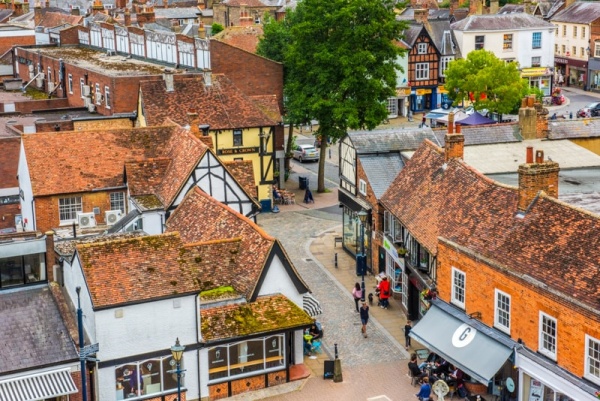
Hitchin is a historic market town in the north of Hertfordshire, four miles south-west of Letchworth Garden City. Interestingly the name 'Hitchin' was not used until the 17th century but the earliest record of a settlement here goes back 1000 years earlier, to the 7th century.
History
In AD 792 King Offa of Mercia established a Benedictine monastery in what is now Hitchin. The monastery eventually moved to St Albans, but the priory church continued to serve the inhabitants. The remains of the Saxon building lie under the foundations of St Mary's Church, the largest parish church in Hertfordshire, which dates primarily from the 13th to the 15th centuries.
Highlights inside the church include a beautifully carved 15th-century screen carved with figures of angels, a late-medieval wineglass pulpit, 15th-century memorial brasses, and a 12th-century effigy of Bernard of Balliol, ancestor of King John Balliol of Scotland.
The town flourished in the Middle Ages due to the wool trade, and the wealthy wool merchants poured money into the church, making St Mary's one of the most impressive 'wool churches' in the region.
Though the influence of the wool trade lessened with time, Hitchin enjoyed a Renaissance when it became a coaching stop on a major route to and from London. The cobbled market place reflects Hitchin's history, with several examples of timber-framed buildings - many hidden behind later facades. As you explore Hitchin you will run across numerous examples of late medieval and Tudor timber-framed architecture, as well as later Georgian buildings.
British Schools Museum
On Queen Street is a fascinating museum of childhood and education housed in an early Victorian school. The school was founded in 1837 on Monitorial principles, with a huge hall for 300 students under 30 monitors and a Master. It was extended twenty years later on the instigation of the poet Matthew Arnold, who was employed as a school inspector.
Visitors can get an eye-opening experience of how Victorian children learned and how the Master lived in a small house at the entrance to the schoolyard.
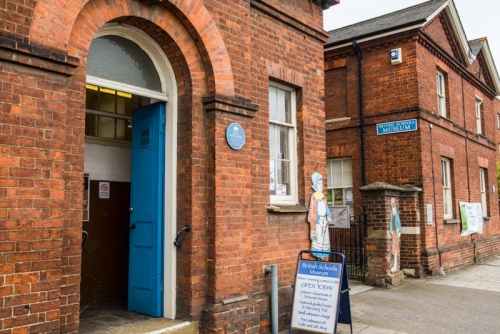
Quaker Burial Ground
Also on Paynes Park is the Quaker Meeting House. Beside the modern Meeting House is a burial ground in use since the 18th century. One unique feature of the burial ground is that all the headstones are the same simple design, a reflection of Quaker values of simplicity. If you look closely you will see that the headstones don't name the month of death, since early Quakers saw the month names as having pagan origins.
Part of the burial ground has been transformed into a peace garden, a space for quiet reflection. The peace garden was designed to mark the centenary of conscription into the armed services in 1916. Many Quakers refused military service since it conflicted with their moral and religious principles, and were imprisoned as a result. Part of the peace garden includes the headstones of two local Quakers who became conscientious objectors.
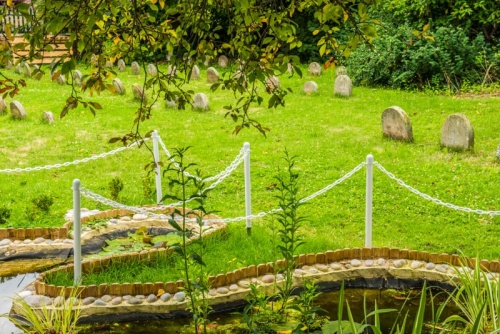
Physic Garden
Within the grounds of the former Hitchin Museum at the corner of Nuns Close and Paynes Park is a fascinating recreation of a medieval physic garden. The garden is maintained by a team of volunteers and features plants believed in the medieval period to have healing qualities. The garden is divided into four parts; plants that aid External Ailments, Internal Ailments, Household Plants, and the William Ransom Border.
The latter is named for the William Ransom & Son company, which began raising herbs for sale in 1846. William Ransom was a Quaker who established a factory to produce natural, botanical and plant extracts for the pharmaceutical, food, and drink industries. The company grew most of its own herbs locally and paid local residents to collect wild herbs, especially dandelions, which were used in coffee drinks.
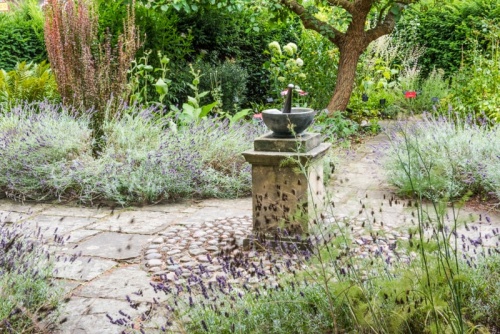
North Hertfordshire Museum
Beside the Town Hall on Brand Street is the North Hertfordshire Museum, an amalgamation of the local museums of Hitchin and Letchworth. The museum covers life in the region from prehistoric times to the present day, with exhibits running the gamut from a Victorian apothecary shop to works by artists William Ratcliffe and Spencer Gore.
Football fans with enjoy seeing Stanley Matthew's boots, but there is much more to see, including archaeology finds, local history, ceramics, Roman artefacts, early photos of the area, children's toys and displays on military and aviation history.
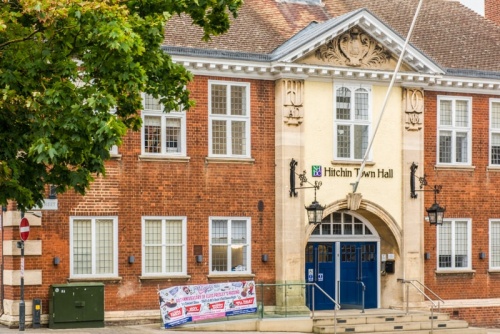
Hitchin Priory
A gentle 2-minute walk from central Hitchin brings you to Hitchin Priory, established in 1317 for the Carmelite order of mendicant friars. After the Priory was suppressed by Henry VIII in 1538 it was purchased by the Radcliffe family, who retained ownership until 1963. The Radcliffes added an elegant Palladian wing in the 1770s. The family eventually sold the Priory to the Hertfordshire County Council who transformed it into an education centre. As of this writing, it has changed use again and now serves as an event venue.
The Biggin
There were two monastic foundations in Hitchin during the Middle Ages. The second was a Gilbertine Priory known as The Biggin, founded by Sir Edward de Kendale in 1361. The priory was dissolved in 1538 and part of the monastic complex of buildings was remodelled as a private house. It was later used as a school and an almshouse and is an excellent example of timber-framed construction.
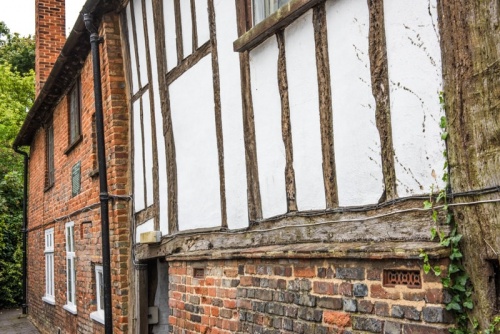
Another historic almshouse is Skynner's Almshouse on Bancroft, a brick building begun in 1670 by John Skynner, the Steward of the Manor, and his brother Ralph.
Just outside the town centre, north of Bedford Road, is Butts Close, an 11-acre public park so-named because it was originally used for archery practice.
Further outside the town is Hitchin Lavender, where you can see stunning fields of colourful lavender in the summer months.
Hitchin was named one of the 'Top 10 Best Places to Live in the UK' by The Times newspaper, a reflection of its great access to major transportation routes and its vibrant cultural and food scene.
About Hitchin
Address: Hitchin,
Hertfordshire,
England
Attraction Type: Town
Location: On the A505 between Letchworth and Luton.
Website: Hitchin
Location map
OS: TL187292
Photo Credit: David Ross and Britain Express
POPULAR POSTS
HERITAGE
 We've 'tagged' this attraction information to help you find related historic attractions and learn more about major time periods mentioned.
We've 'tagged' this attraction information to help you find related historic attractions and learn more about major time periods mentioned.
Find other attractions tagged with:
NEARBY HISTORIC ATTRACTIONS
Heritage Rated from 1- 5 (low to exceptional) on historic interest
Hitchin, St Mary's Church - 0.2 miles (Historic Church) ![]()
British Schools Museum - 0.2 miles (Museum) ![]()
St Pauls Walden, All Saints Church - 4.4 miles (Historic Church) ![]()
Meppershall Castle - 5.3 miles (Castle) ![]()
Knebworth House - 6 miles (Historic House) ![]()
Lower Gravenhurst, St Mary's Church - 6 miles (Historic Church) ![]()
Codicote, St Giles Church - 6.8 miles (Historic Church) ![]()
Someries Castle - 7.1 miles (Castle) ![]()
Nearest Holiday Cottages to Hitchin:
Biggleswade, Bedfordshire
Sleeps: 4
Stay from: £320 - 1504
More self catering near Hitchin
